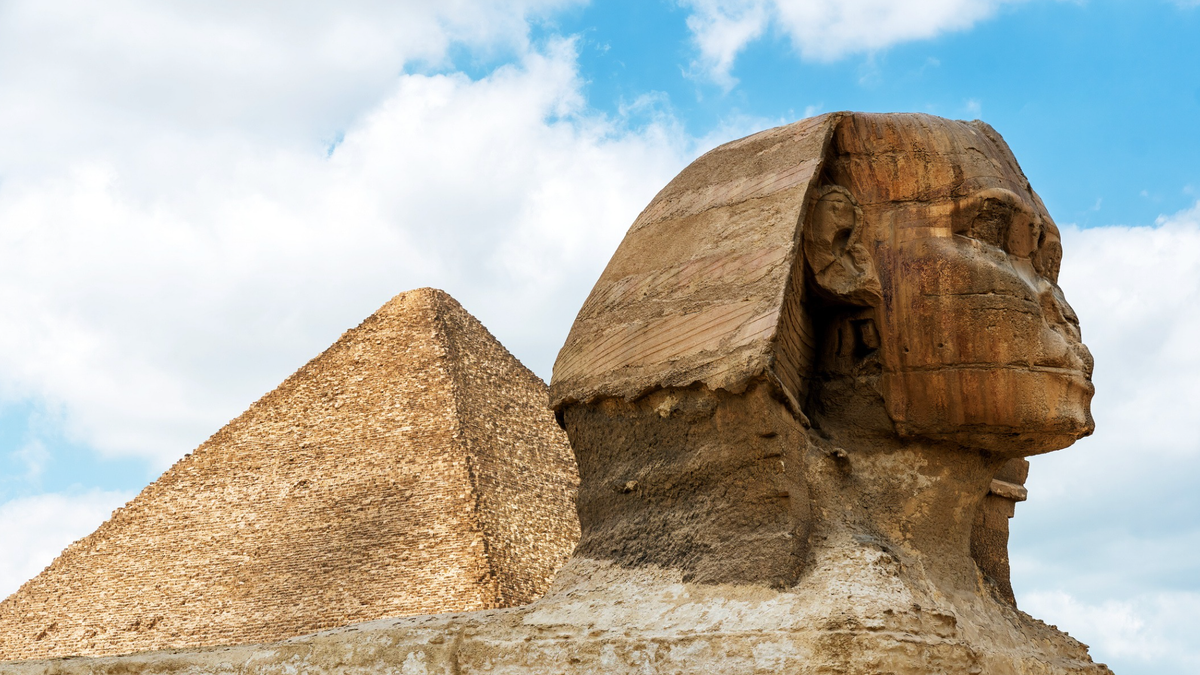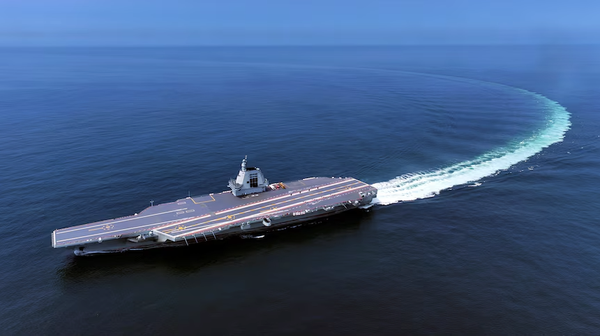Old Kingdom Egypt: National Capability Assessment in its Bronze Age Context
Old Kingdom Egypt (c. 2686–2181 BCE) assessment against the Global Institute for National Capability (GINC) National Capability Framework, applying the Emerging National Capability Ratings scale to an ancient context.

Hard capabilities. Old Kingdom Egypt excelled in critical technologies, strategic infrastructure, and governance. Monumental engineering, centralized state control, and mastery of Nile-based irrigation placed Egypt among the world’s most capable powers of its age.
Soft capabilities. Egypt’s cultural cohesion and ideological control were unmatched domestically, though its external cultural influence was more regional than global. Education and religious authority strengthened elite capacity, while geographic security reduced military expansion needs.
Economic capabilities. The state’s command economy, agricultural surplus, and robust internal production enabled stability and grand-scale projects. Trade networks were well-developed for the region, though less extensive than Mesopotamia’s far-reaching systems.
The assessment that follows examines Old Kingdom Egypt’s capabilities through the lens of the GINC National Capability Framework, adapted for the Bronze Age context. By dividing the analysis into hard, soft, and economic capability domains, it highlights the balance between Egypt’s tangible assets—such as its technology, infrastructure, and security—and the societal, cultural, and institutional strengths that underpinned its longevity. Each rating is benchmarked against contemporary civilisations like Sumer and the Indus Valley, reflecting relative performance in the key areas that defined state power and resilience during the third millennium BCE.
Taken together, these evaluations provide a holistic view of how Old Kingdom Egypt not only maintained internal stability and economic self-sufficiency, but also set enduring standards in governance, monumental architecture, and cultural expression. The framework shows a civilisation leveraging the environmental reliability of the Nile and the efficiency of centralised administration to achieve sustained development. While some capabilities—such as regional influence and military expansion—were more modest compared to later empires, Egypt’s performance across most domains placed it among the leading powers of the Bronze Age world.
| Capability | Rating | Assessment |
|---|---|---|
| Critical Technology | A− | Advanced engineering, writing, papyrus, metallurgy; lacked wheel but excelled in other innovations. |
| Strategic Infrastructure | A | Extensive irrigation, storage, and transport via Nile; enabled massive projects and stable food supply. |
| National Security | B | Strong defensive position, capable militia; focused on protection over expansion. |
| Human Capital | A− | Skilled scribes, artisans, and priests; healthy agrarian base supported productivity. |
| Information & Influence | B | Powerful internal cultural messaging; moderate regional influence abroad. |
| Governance & Integrity | A | Centralized divine kingship with effective bureaucracy; long-lasting stability. |
| Financial Strength | A | Command economy with large surpluses funding projects, trade, and famine reserves. |
| Production & Innovation | A | High output in agriculture, crafts, and mining; introduced efficiency-boosting technologies. |
| Investment & Trade | B+ | Strong regional trade network; focused on luxury and strategic imports, less global reach. |
Hard Capabilities
Hard Capabilities in the Old Kingdom Egypt context reflect the civilisation’s ability to project power, safeguard its territory, and sustain large-scale state functions through technology, infrastructure, and security. These capabilities combined advanced engineering and scientific knowledge with the organisational capacity to mobilise vast resources. They were underpinned by a highly productive environment shaped by the Nile, enabling the construction of monumental architecture, the maintenance of agricultural surplus, and the defence of borders against external threats. In these domains, Egypt consistently performed at or near the highest levels of the Bronze Age, often setting standards for its contemporaries.
Critical Technology
Old Kingdom Egypt demonstrated technological advancement equal to or surpassing its contemporaries. The civilisation independently developed writing (hieroglyphics and hieratic), papyrus manufacture, precise solar calendars, advanced stone masonry, and medical knowledge. Architectural feats such as the Step Pyramid and Great Pyramid showcased engineering expertise, while the ox-drawn plow and bronze metallurgy improved productivity. Although the wheel was absent from daily use due to Nile transport dominance, Egypt’s innovations in other domains ensured its place among the most technically advanced cultures of the Bronze Age.
Strategic Infrastructure
The Nile’s predictable floods, combined with extensive irrigation canals, dikes, and grain storage systems, underpinned Egypt’s food security. Centralized labour mobilization enabled the construction of pyramids, temples, and administrative complexes, reflecting sophisticated logistical coordination. The Nile itself functioned as a natural transport artery, reducing reliance on overland roads. By comparison to its contemporaries, Egypt’s infrastructure allowed it to sustain large populations, mobilize massive workforces, and complete projects of a scale unmatched in its era.
National Security
Geography provided Egypt with formidable natural defences — deserts to the east and west, the Mediterranean to the north, and cataracts of the Nile to the south. The Old Kingdom’s military was primarily a defensive conscript force drawn from the provinces, sufficient for protecting borders and securing trade routes. Limited military campaigns into Nubia and the Sinai secured key resources. While not an expansionist power like later empires, Egypt’s security apparatus was stable and effective for maintaining internal order and deterring threats.
Soft Capabilities
Soft Capabilities capture the societal, institutional, and cultural strengths that enabled Old Kingdom Egypt to function as a cohesive and enduring civilisation. These capabilities were rooted in a skilled and well-nourished population, a tightly controlled information environment, and a governance system that fused religious authority with bureaucratic efficiency. Together, they ensured stability, reinforced the pharaoh’s legitimacy, and sustained Egypt’s cultural identity both at home and in its sphere of regional influence.
Human Capital
Education in the Old Kingdom was specialized but influential. Scribal schools produced literate administrators proficient in writing, mathematics, and law. Skilled artisans, engineers, and priests formed a capable elite supporting state functions. The agricultural base provided reliable nutrition, sustaining a healthy, productive population. Compared with contemporaries, Egypt’s human capital was strong, ensuring continuity of administrative and technical knowledge across generations.
Information & Influence
Domestically, Egypt’s control over information was absolute, with monumental inscriptions, art, and religious texts reinforcing state ideology. Pharaohs used architecture, ritual, and iconography to project authority and unity. Externally, Egypt’s cultural influence was significant but largely regional, shaping neighbouring Nubia and the Levant. While Mesopotamia’s influence sometimes reached farther through trade, Egypt’s enduring monuments and religious concepts would prove more long-lasting in historical memory.
Governance & Integrity
Governance was anchored in divine kingship, with the pharaoh seen as a god-king ensuring cosmic order (Ma’at). A well-developed bureaucracy managed taxation, justice, irrigation, and monumental construction. Central authority maintained stability for centuries, in contrast to the often-fragmented Mesopotamian city-states. Although the Old Kingdom ultimately collapsed under the strain of decentralization and environmental stress, for most of its duration Egypt’s governance was highly effective, with integrity reinforced by ideological legitimacy and administrative competence.
Economic Capabilities
Economic Capabilities reflect the Old Kingdom’s capacity to generate, manage, and deploy resources to sustain its population, finance state priorities, and engage in regional exchange. Anchored by the predictable bounty of the Nile, Egypt combined a robust command economy with productive industries and selective but well-managed trade networks. This economic foundation not only secured domestic stability but also underwrote the monumental building programs and administrative apparatus that defined the civilisation’s enduring legacy.
Financial Strength
The Old Kingdom operated a state-directed command economy. Agricultural surpluses collected as taxes in kind (grain, livestock, goods) funded public works, paid workers, and supported trade. Surpluses were stored in granaries as a buffer against famine. The stability of the Nile harvests allowed for sustained investment in large-scale projects without undermining basic subsistence, making Egypt’s fiscal capacity exceptional for its time.
Production & Innovation
Egypt’s agricultural output supported not only the population but also a large non-farming workforce. State-directed production included mining, quarrying, textile manufacturing, and large-scale food processing. Innovations such as improved plowing methods and shipbuilding techniques enhanced efficiency. The ability to mobilize resources and labour for monumental construction remains one of the clearest indicators of Egypt’s production capacity and organisational skill.
Investment & Trade
Egypt’s trade networks reached into Nubia, the Levant, and the eastern Mediterranean, importing luxury goods and raw materials not available locally — cedar from Lebanon, copper from Sinai, gold from Nubia. Exports included papyrus, linen, and grain. While self-sufficient in essentials, Egypt’s trade was regionally significant though less geographically extensive than Mesopotamia’s. Investment in trade infrastructure, including ships and overland routes, enabled steady resource inflows critical to elite consumption and monumental projects.




